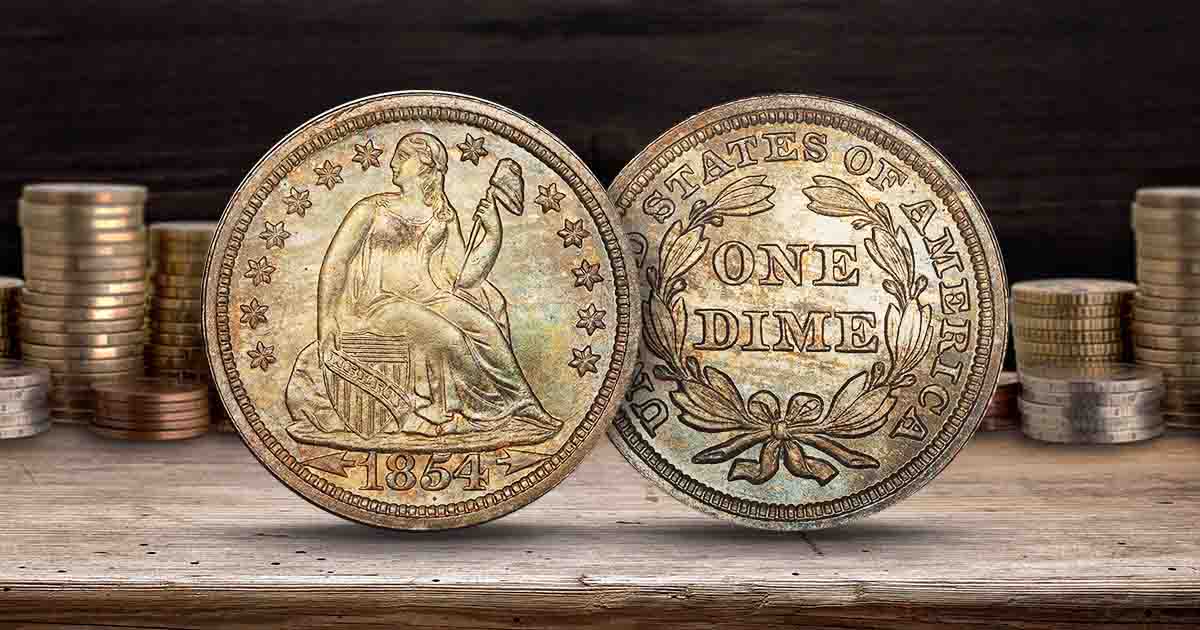
The word dime has roots in the Latin word for tenth, decimus, but the concept of dividing currency into tenths dates to the Roman Empire. The Roman Empire employed a decimal system for currency, with a denarius being equal to 10 As coins.
The word disme was first used in France in the 1500s, and it meant a tenth or a tenth part.
American Origins of the Dime and Decimal System
Following the Revolutionary War, the state of currency in the nation was in shambles. Every former colony had a unique system of currency, typically in pounds.
But a New York pound, a Maryland pound, and a Pennsylvania pound were all different. Spanish dollars, British pounds, and notes printed by Congress were all used at once.
To further complicate matters, these currency systems had different divisions.
The British pound was divisible in 20 shillings, and shillings were each worth 12 pence. The Spanish dollar was divisible by 8 reales, one for each finger, not including thumbs.
Thomas Jefferson’s Decimal Solution
Thomas Jefferson pushed for the decimal system, which he believed would make accounting easier for the common American. Jefferson was opposed to centralized power but thought the situation of American currency was out of control.
He wrote Notes on the Establishment of a Money Unit, and of a Coinage for the United States in 1784.
Thomas Jefferson argued against dividing the U.S. currency system into eighth’s like the Spanish dollar, or into 90 pieces, as the central superintendent of finance, Robert Morris, believed.
He pushed for the U.S. dollar to be decimalized, writing, “Everyone knows the facility of decimal arithmetic.”
And while Jefferson did not create the concept of a dollar or of decimalization, he did wield a strong influence over the fledgling nation. His insistence persuaded the government to try things his way.
The First Dime and Half Dime
The dime and half dime were two of the first denominations of coins struck by the United States. They were first minted within a few months of the Coinage Act of 1792 passing.
This was the legislation that created the United States Mint and specified the value of coins like the dime to be worth one-tenth the dollar’s value. These fractions were established to mirror the British system of pounds, shillings, and pence that colonial Americans were accustomed to.
Today, the dime is the only U.S. coin that is not denominated in dollars or cents.
The March of Dimes and President Roosevelt
President Roosevelt contracted polio in 1921 at the age of 39 and lost the use of his legs.
He founded the Georgia Warm Springs Foundation in 1926. In 1938, he renamed it as the National Foundation for Infantile Paralysis. In that year, Roosevelt appealed to the public for help.
While at a fundraiser, Eddie Cantor jokingly asked the American people to send dimes to the President and coined the name ‘March of Dimes.’ The public took his words seriously and mailed 2,680,000 dimes, along with thousands of dollars, to the White House.
President Roosevelt died in 1945 and did not live to see Dr. Jonas Salk develop a polio vaccine in 1955.




